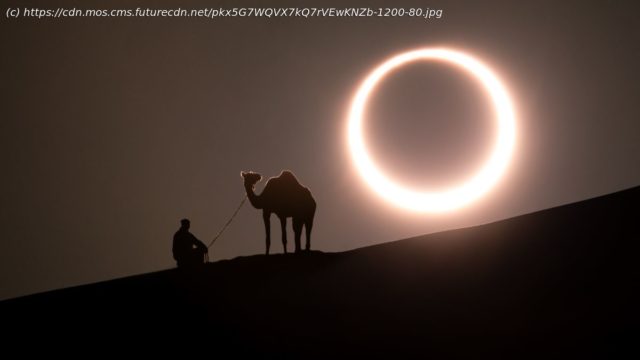A “ring of fire” solar eclipse will briefly appear in parts of Africa and Asia this weekend, and if you aren’t out there in person, you can take in the spectacular show online.
A “ring of fire” solar eclipse will briefly appear in parts of Africa and Asia this weekend, and if you aren’t out there in person, you can take in the spectacular show online.
Sunday’s solar eclipse is what is known as an annular eclipse, in which the moon does not completely cover the sun as it passes between the star and Earth as seen from our planet. Instead, a ring of sunlight will still shine around the outer edge, hence its nickname: a “ring of fire” eclipse.
The time of maximum eclipse, when that “ring of fire” event happens, will be at 2:40 a.m. EDT (0640 GMT)Sunday, June 21, when the moon crosses into the center of the sphere of the sun, from Earth’s perspective. The eclipse starts at 11:45 p.m. EDT Saturday, June 20 (0345 GMT Sunday) and ends at 5:34 a.m. EDT (1034 GMT) June 20, according to NASA.
Related: Solar eclipse guide 2020: When, where & how to see them
(Image credit: Shutterstock)
The eclipse will happen just a couple of hours after the moon enters the “new moon” phase. Because the moon will be near its apogee or farthest part from Earth, the size of the moon’s disk will not be quite enough to cover the sun. The small ring of sunlight still visible will make this an “annular” eclipse (from the Latin annulus, meaning ring-shaped.)
Regions in the path of visibility include the Democratic Republic of the Congo, Central African Republic, South Sudan, Ethiopia, the Red Sea, Yemen, Saudi Arabia, Oman, the Gulf of Oman, Pakistan, India, China, Taiwan, the Philippine Sea (south of Guam), northern Australia and the north Pacific Ocean.
IMPOWhile you will need to take precautions to protect your eyes if you are there in person, online the solar eclipse is perfectly safe to view with unprotected eyes.






